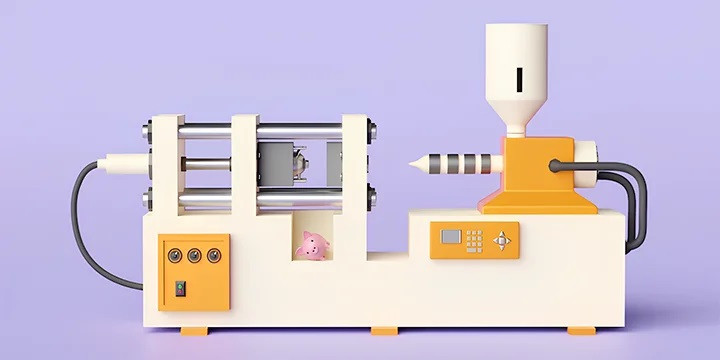views
If you’ve ever tried making anything out of concrete—doesn’t matter if it’s a paver, planter, or countertop—you know the mold is a big deal. The concrete is only going to be as good as the thing it sits in. If the mold sucks, your final product’s gonna look like it too. Been there.
Now in 2025, there are tons of materials concrete mold makers are using for molds. Some concrete mold makers have been around forever. Others are newer or getting more attention because of tech or eco stuff. But picking the “best” mold? That depends on what you’re actually doing.
Let me walk you through it, without all the fluff.
Silicone Is Still King for the Small Stuff
Let’s say you’re making a little decorative item—maybe a planter, or some artsy tray with a funky shape. Silicone is a go-to. It’s flexible, doesn’t stick, and when it’s time to pop the concrete out, it just... works. No tugging. No breaking. No praying.
Plus, silicone molds tend to last a while if you treat them decently. You’ll spend a bit more upfront, but you won’t need a new one every weekend.
Rubber Is the Workhorse
Now, if you're doing something bigger—like a countertop or some pavers—rubber concrete molds are where it’s at. They’re strong enough to be used over and over again. They’ve got a bit of give, so you can still get some detail in the design. And rubber concrete molds don’t fall apart after five uses.
They’re not exactly cheap, but they earn their keep if you're doing more than a couple pours.
Plastic Gets the Job Done (But Only for So Long)

You’ll find plastic molds all over the place. They’re cheap, light, and everywhere online. Perfect for weekend DIYers who just want to make a few stepping stones or a birdbath.
But here’s the deal: plastic isn’t flexible. If your mold design isn’t tapered just right, getting the concrete out can be rough. You’ll end up cracking the mold or the concrete—or both. You can use them, just don’t expect them to last forever.
Wood Works for the Big Builds
For bigger construction-style projects—like concrete walls or big beams—wooden molds still do the trick. Especially when you’re working with straight lines and big rectangles. Most concrete mold makers use melamine-coated boards or seal them up so the concrete doesn’t stick too badly.
They’re not fancy, and they’re not reusable forever, but they’re solid, easy to customize, and cheap to build with.
Metal Molds? That’s Industrial Territory
If you’re building bridges, giant columns, or anything that needs exact dimensions every single time—metal is the choice. Steel or cast iron, usually. You won’t see these in a backyard project. They’re for the heavy-duty stuff. Crazy durable, but not something you’d mess with unless you’re running a serious operation.
Liquid Rubber – For Detail Freaks
This one’s more for artists and designers. You can use liquid rubber to make concrete paver molds around something—say, a fancy sculpture or a textured piece—and it picks up every little detail. Takes some prep, but the results are next level. And once you’ve got that mold, you can use it again and again.
New in 2025: Molds Made from Mud?
Sounds fake, but it’s real. Some folks (like at MIT) have started 3D printing molds using mud, straw, and wax. No joke. The idea is to make temporary molds that don’t mess with the planet. You use them, then break them down and toss the leftovers back into the earth. Might not be ready for mainstream use yet, but it’s an interesting option if you’re thinking green.
Also: Smarter Rubber Formulas
There are newer rubbers on the market now—like specific polyurethane blends—that last longer, stretch better, and hold more detail. They’re mostly used by concrete mold makers who make the same item over and over again. Not cheap, but saves money in the long run if you’re mass-producing.
So What Should You Actually Use?
Here’s the simple version:
● Doing decorative stuff? Go with silicone or liquid rubber.
● Making something big but detailed? Try rubber.
● Just messing around with a few things for the yard? Plastic will be fine (but don’t expect miracles).
● Working with straight, blocky shapes? Wood is easy and effective.
● Building something for a bridge? Metal, hands down.
● Want to test out eco ideas? Look into those new mud-based molds.
Also: think about how many times you’re going to use the mold. Once? Don’t overthink it. Dozens of times? Spend the money on something that’ll hold up.
Final Thoughts (Because You’re Probably Skimming Now Anyway)
Concrete’s simple. But molds? Not so much. There’s no “perfect” material—it’s all about what you're building, how often, and how picky you are about the details. Just don’t cheap out on something you plan to reuse a lot. That’s where people mess up. Trust me.
And hey, the best way to figure it out is just to try it. Make something small. Test a few molds. You’ll get a feel for what works. And once you do? The whole process gets a lot more fun.













Comments
0 comment